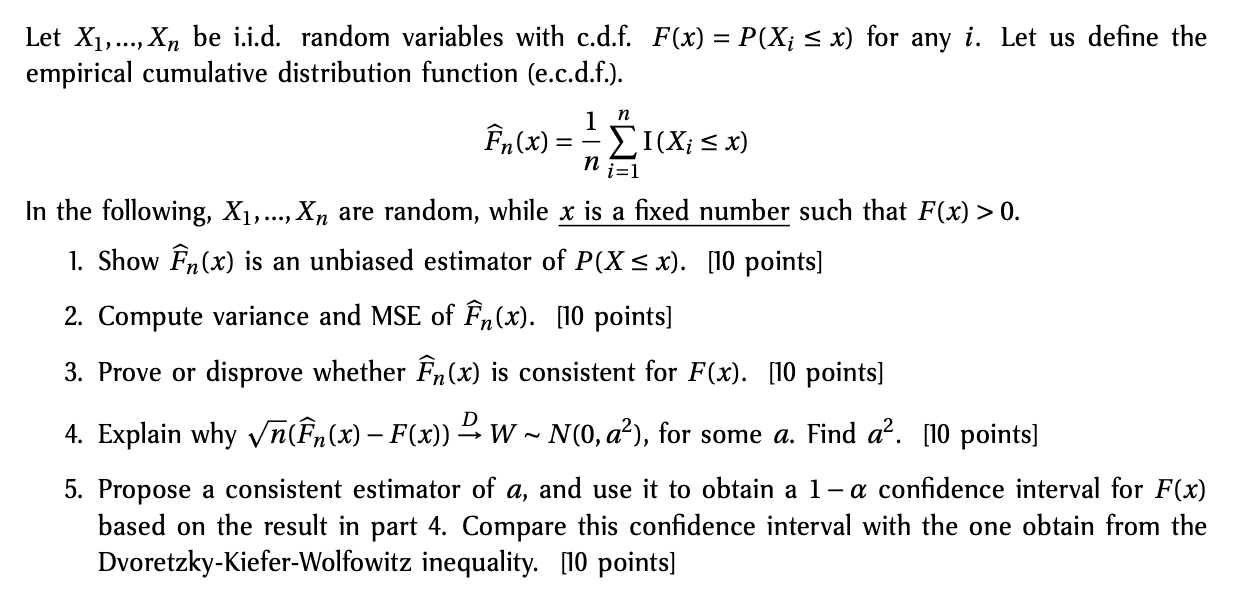Answered step by step
Verified Expert Solution
Question
1 Approved Answer
Let X1, ..., Xn be i.i.d. random variables with c.d.f. F(x) = P(X; 0. 1. Show n(x) is an unbiased estimator of P(X sx). [10

Step by Step Solution
There are 3 Steps involved in it
Step: 1

Get Instant Access to Expert-Tailored Solutions
See step-by-step solutions with expert insights and AI powered tools for academic success
Step: 2

Step: 3

Ace Your Homework with AI
Get the answers you need in no time with our AI-driven, step-by-step assistance
Get Started


